April 21, 2025
Remember when Gucci made headlines in 2024 with the first global Augmented Reality (AR) shoe try-on feature on Snapchat? It lets Snapchatters virtually try on sneakers, visit the product page, and purchase their favorite pair directly on the platform — a powerful example of social commerce in action.
But AR is just one piece of the puzzle. Beyond direct purchases on platforms like TikTok and YouTube, social media serves as a crucial touchpoint, guiding consumers to brand websites, social ad links, physical stores, and marketplaces like TikTok Marketplace and Facebook Marketplace to make the final purchase.
The path to purchase is more connected than ever, with social media driving purchases for 80% of Gen Z and millennials, according to the Shopper Preference Report 2025. The key factors for the social commerce growth, as confirmed by the survey respondents, are budget constraints and better deals and discounts on social media.
Let’s take a closer look at the social commerce trends.
Understanding social commerce growth
Roughly a quarter of shoppers (24%) have increased their spending on social media platforms by 20% or more over the past year. It is likely due to growing engagement with short-form videos, creator content and recommendations from friends and family. In contrast, those not shopping on social media or cutting back their spending may be driven by hidden ads, privacy concerns, or budget constraints.
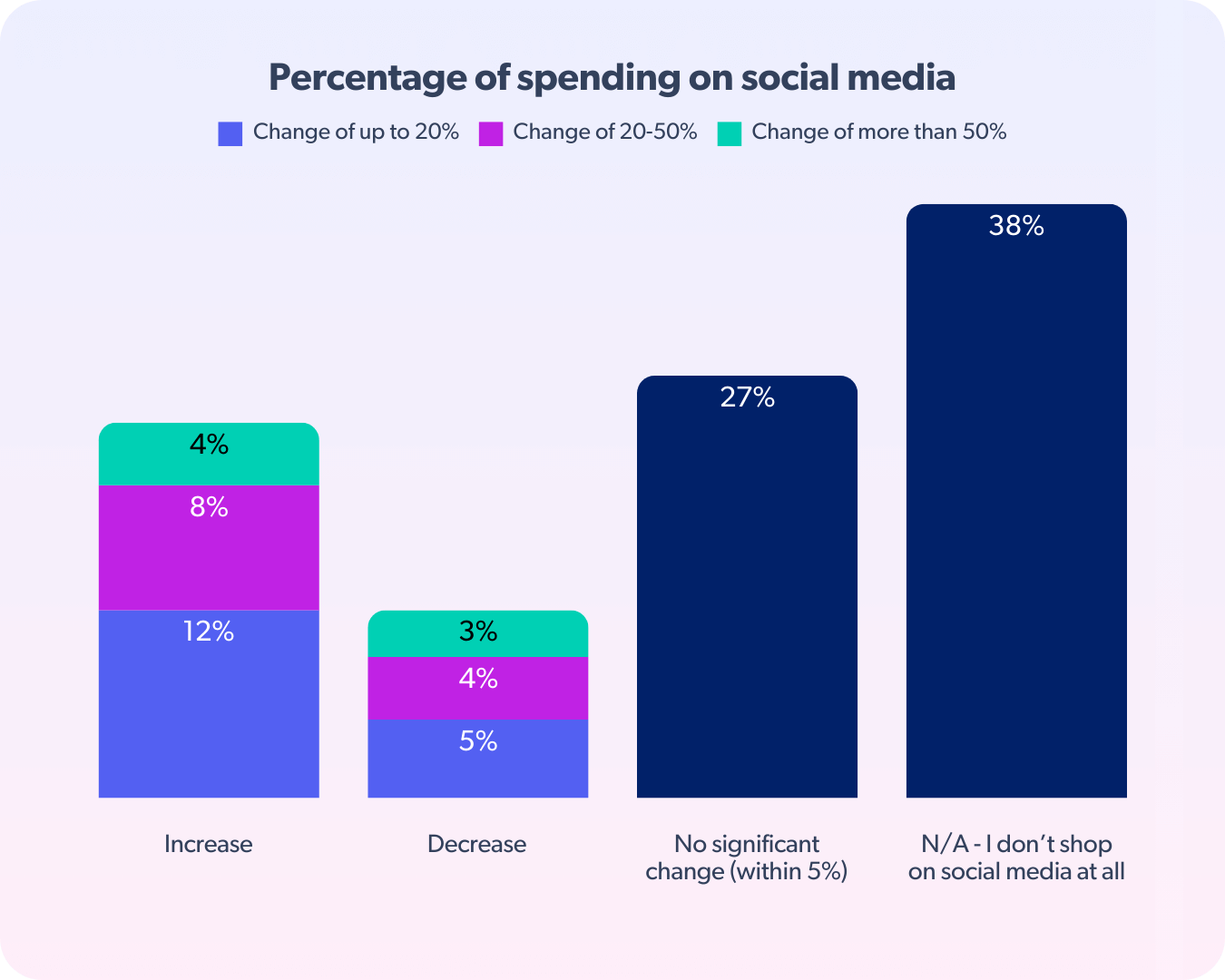

Interaction with brands on social media
As you go deeper, discounts and promotions are the top drivers of interaction with brands on social media across generations, followed by shoppers seeking to learn more about products/services. Learning more about products and services is the primary motivator for the older generation, while young shoppers are more influenced by brands used by friends and family or creators when engaging in social commerce.
Role of social media content in influencing the purchase
Discovering new products and brands is the most sought-after choice globally, indicating that social media platforms are a powerful tool for driving awareness. But for 38% social media helps confirm their purchase decision and reconsider a purchase, highlighting how social commerce guides shoppers through the consideration and conversion phases.

Gen Z purchasing behavior on social media
At least 79% of young shoppers, a mix of Gen Z and millennials, use social media significantly in their shopping journeys. Their engagement often starts on social platforms and leads to brand websites, retailer sites, social media marketplaces like TikTok and Facebook, and, in many cases, physical stores. Nearly 18% of 18-34s buy directly from TikTok shops or Instagram shops, expanding on the TikTok shopping and Instagram shopping trends.
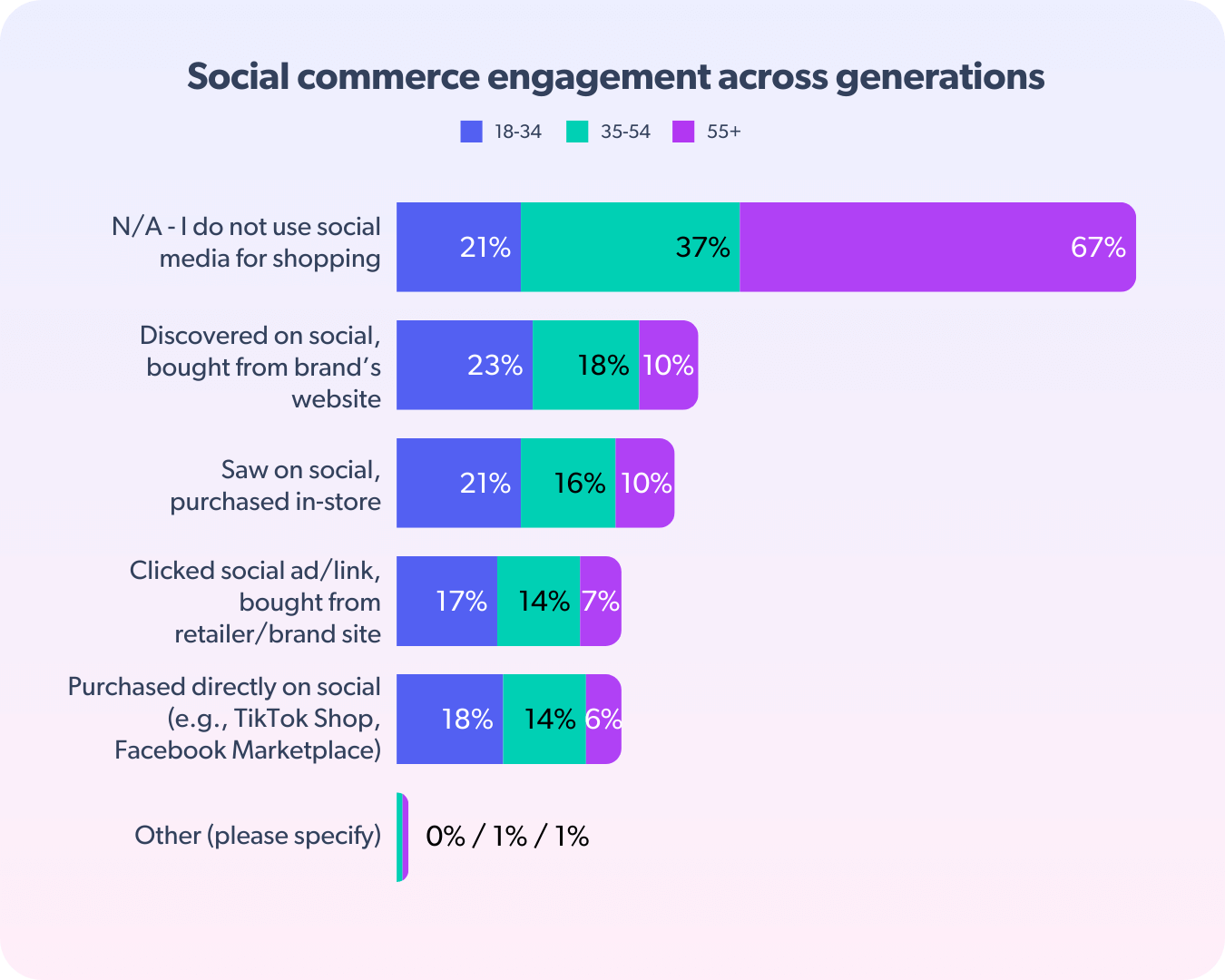
Channels driving social commerce growth
Overall, 52% of shoppers prefer Facebook for social commerce, followed by Instagram and YouTube. Globally, Australia has the highest number of Facebook users. Instagram leads in Germany, TikTok in the UK and YouTube in the USA.
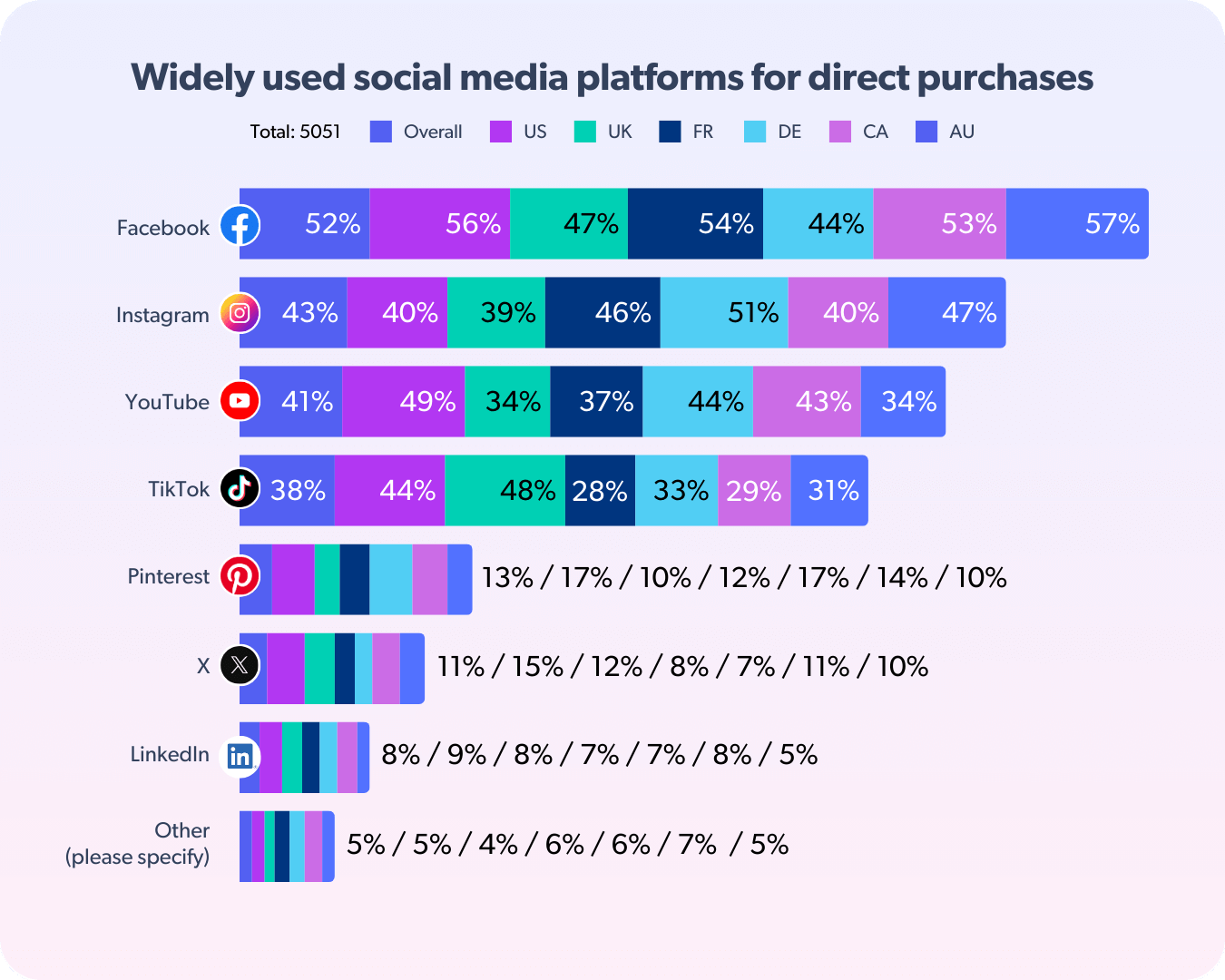
Among Gen Z and millennials, Instagram and TikTok are highly popular for their bite-sized, consumable videos. Whereas long-form videos on Facebook and YouTube engage more than half of the shoppers above 35 and above, highlighting their preference for product demos and tutorial videos.
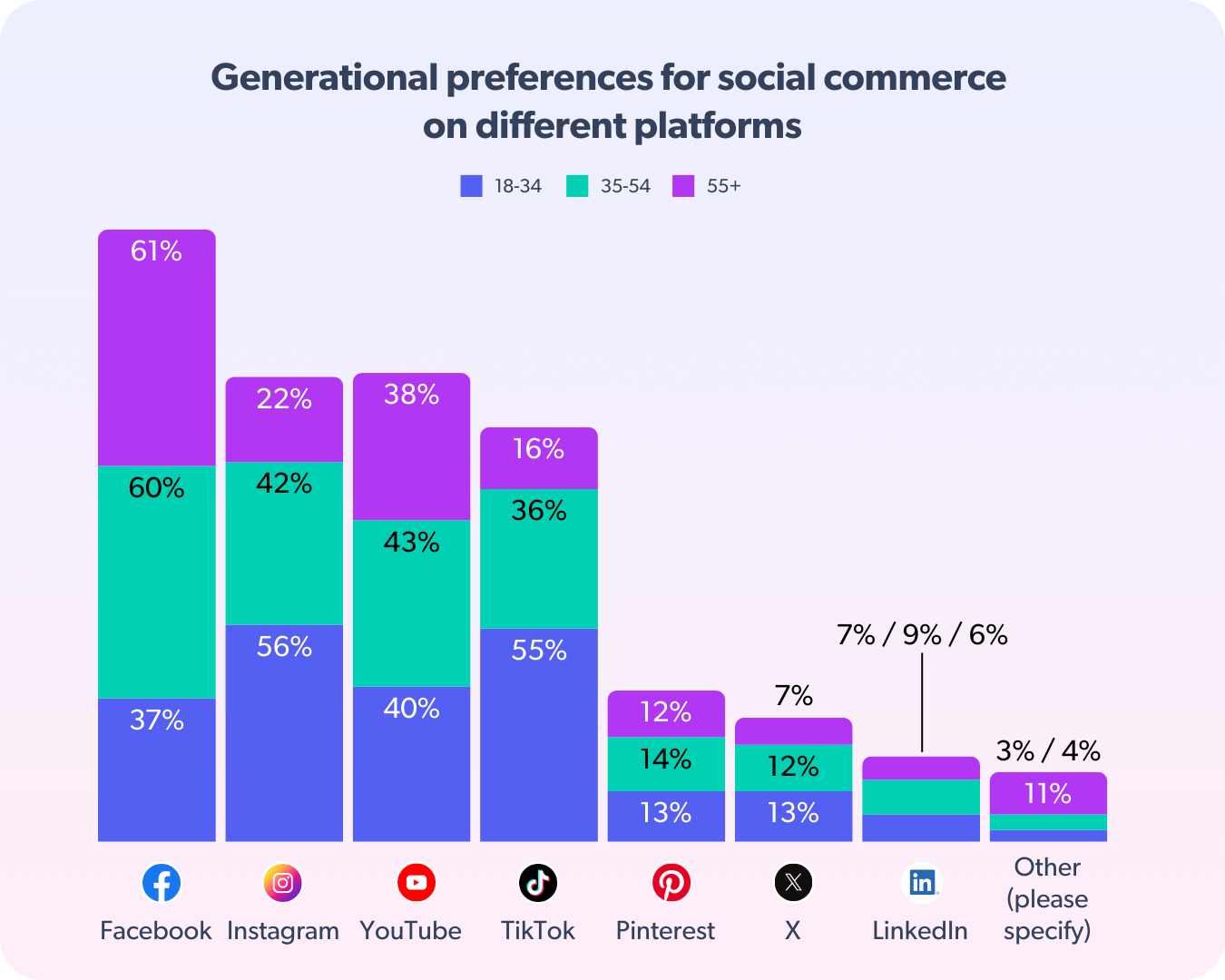
Product categories dominating social commerce
Facebook and YouTube lead the purchase of automotive products, while Instagram and TikTok dominate in the health and beauty products. This shows that for heavy-duty purchases, shoppers like to make informed decisions based on detailed understanding. In contrast, health and beauty purchases are driven by discoverability.
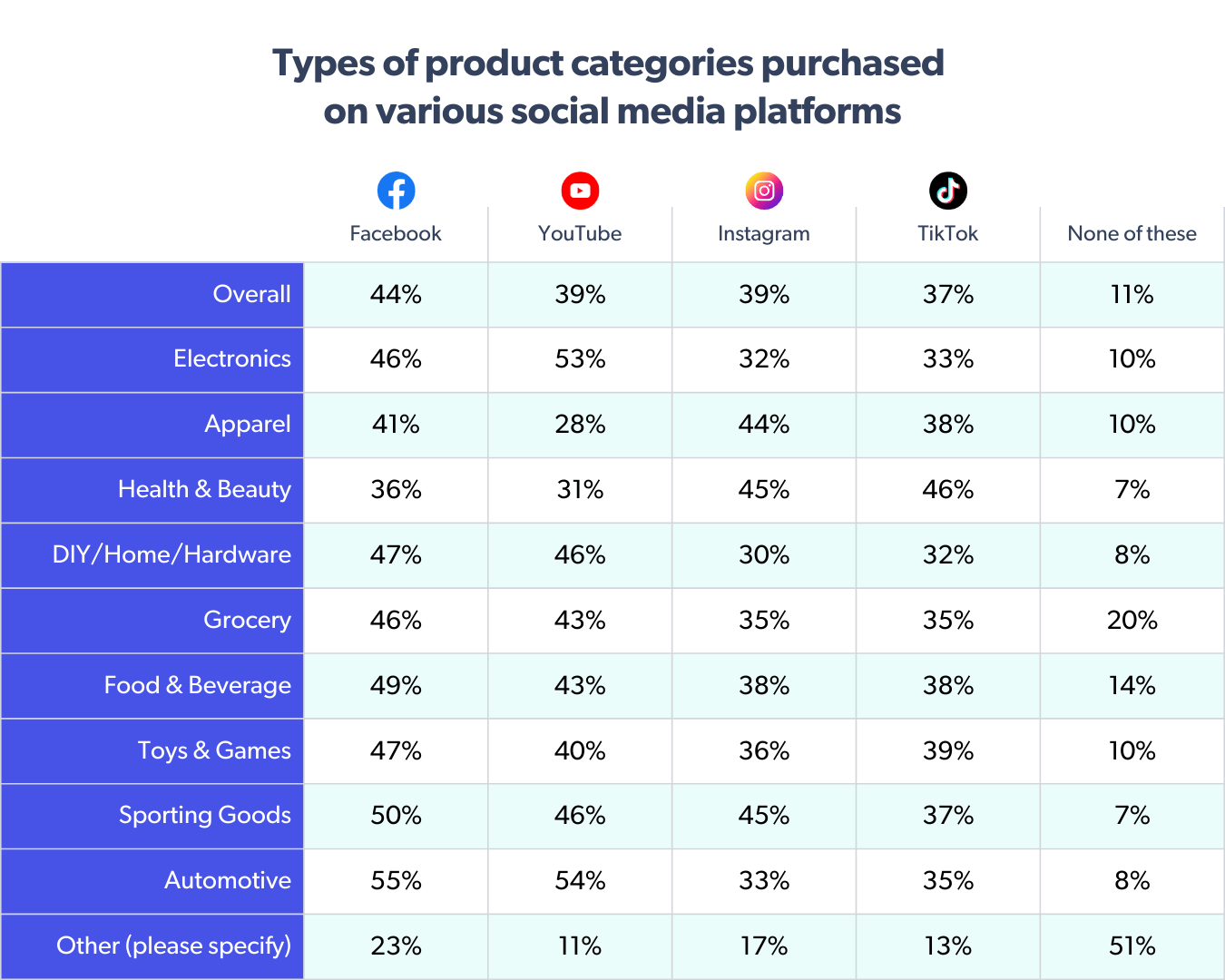
Conclusion
To maximize the impact of social commerce, marketers should employ trust-building strategies such as creator transparency, user-generated content, and multi-touch validation. Learn more about these aspects in our latest Shopper Preference Report.





